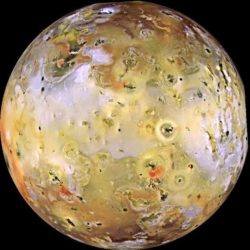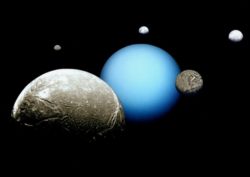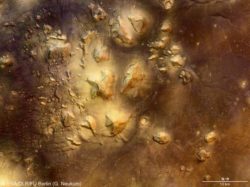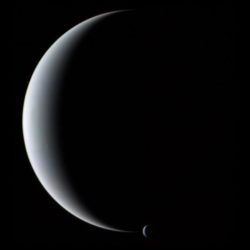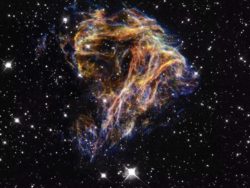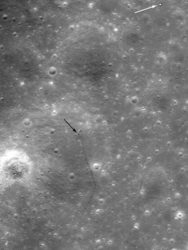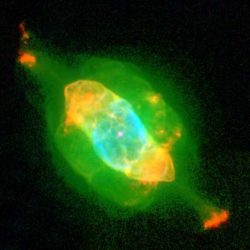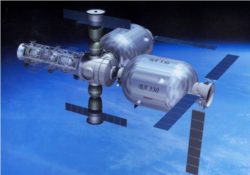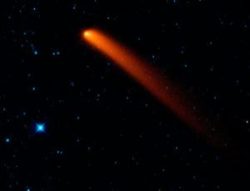Astronomy Picture of the Week – Venus: Earth’s Cloudy Twin
Discover Venus, Earth's sister planet, in this captivating image by Galileo spacecraft. Learn about its extreme conditions and unmatched brilliance in the sky.
Astronomy Picture of the Week – The Copernicus Crater
Copernicus is one of the largest lunar impact craters on the visible hemisphere of the Moon. It was named after the Polish astronomer Nicolaus Copernicus. The crater is estimated to have formed about 800 million years ago during the Copernican period of lunar history, which was named after the crater. Copernicus is visible using binoculars, and is located slightly northwest of the center of the nearside, in eastern Oceanus Procellarum. The crater has a diameter of 93 kilometers and a maximum depth of 3.8 kilometers. Copernicus also has a dozen satellite craters ranging between 3 and 7 kilometers in diameter. By convention they share the name of the main crater…
Astronomy Picture of the Week – Io Moon Of Jupiter
Io is the most volcanically active body in the solar system. It is the innermost of Jupiter's four major moons also known as the Galilean moons, named after their discoverer. Io's surface is constantly under construction. The volcanic eruptions quickly reshape every part of the moon's crust, so that a map of Io wouldn't stay accurate for quite long.
Astronomy Picture of the Week – Planet Uranus with Moons
This is a photo montage of Uranus and five of it's largest moons. The photos were taken separately by the Voyager 2 spacecraft. The moons, from largest to smallest as they appear here, are Ariel, Miranda, Titania, Oberon and Umbriel. When Voyager 2 visited the planet, it discovered 10 new smaller moons and took close-up pictures of its ring system.
Astronomy Picture of the Week – Stone Mesas of the Cydonia Region on Mars
This photo of the unusual stone mesas of the Cydonia region on Mars was taken by the robotic spacecraft called Mars Express. It shows an area about 90 kilometers wide. What most people don't know is that the region in the far lower right of this photo is the same region in which the Viking orbiter saw a human face in 1976.
Astronomy Picture of the Week – Crescent Neptune and Triton
This is a photo of a crescent Neptune and its largest moon Triton taken by the Voyager 2 probe in 1989. It is unique because such a picture could not be taken from Earth since Neptune never shows a crescent phase to sunward Earth.
Astronomy Picture of the Week – Jupiter from Voyager
This photo of Jupiter featuring the Great Red Spot was taken by the Voyager 1 spacecraft as it flew-by the planet in 1979. The Great Red Spot is a giant hurricane-like storm rotating in the planet's atmosphere. It is so large that three Earth's would fit inside. It is still unclear as to how old this storm is, since it was first recorded by astronomers over 300 years ago, suggesting that it could be much older than that. How it managed to remain active for that long still remains a mystery.
Astronomy Picture of the Week – Distant Nebula
This nebula, designated as N 49 or DEM L 190, looks like puffs of smoke or sparks from a fireworks display. It is one of the most distant nebulae ever observed, located in the Large Magellanic Cloud, a dwarf galaxy orbiting the Milky Way. The nebula is the result of a large supernova, whose light should have reached Earth a few thousand years ago.
Rover Spotted On The Moon
The Russian Lunar rover Lunokhod 2 was recently spotted on the Moon’s surface. As shown in the photo below, the black arrow indicates where the tracks begin, while the white one shows the resting place of the rover. The arrows were placed by Phil Stooke, geography professor at University of Western Ontario. Richard Garriott, a successful video game developer and one of fewer than 10 private citizens to travel into space is the current owner of Lunokhod 2. He acquired it for over $68,500 when it was listed for sale in 1993 Sotheby’s auction. After seeing those findings, he mentioned plans to go see the rover from lunar orbit, or…
Astronomy Picture of the Week – Nebula NGC 7009
This odd greenish nebula, called NGC 7009 or the Saturn Nebula, is the result of a star similar to our sun going nova. Since then, a bright new star was born from the gases of its predecessor. It can be seen in the center of the nebula, inside the bluish sphere of gas. The nebula is located 1,400 light-years away in the constellation of Aquarius. The picture was taken by the Hubble Space Telescope. Image Credits: NASA and Hubble Space Telescope
Inflatable Space Stations
NASA is considering the use of inflatable modules for the International Space Station (ISS). This idea has been proposed as early as in the 1960s, but it has never been put to use in space until Bigelow Aerospace took over the idea and developed two working prototypes and tested them in space.
Dark Asteroids Discovered, Possible Threat to Earth
Dark asteroids near Earth, hard to spot but potential threats. WISE infrared telescope helps detect them. What's the risk of asteroid impact?



